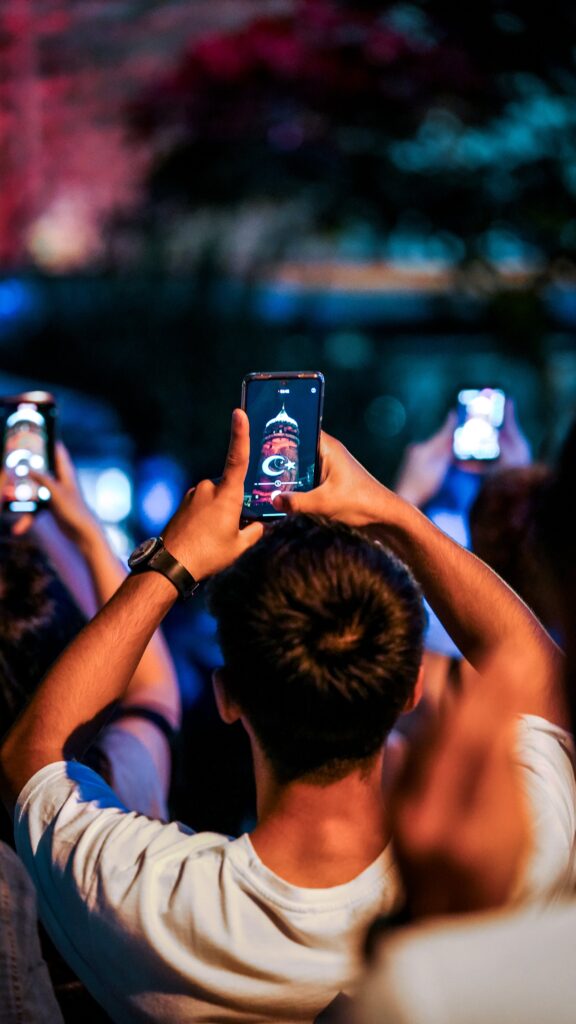Imagine never having to manually adjust the temperature in your home again. With the rise of smart technology, this dream has become a reality. In this article, we will explore the key differences between a traditional thermostat and a smart thermostat, and how this advanced technology can transform the way you control the climate in your living space. Say goodbye to constantly fiddling with buttons and hello to a more convenient and efficient way of managing your home’s temperature.

Functionality
Traditional Thermostat
A traditional thermostat is a basic device that allows you to set a desired temperature for your home. It typically consists of a dial or buttons that allow you to adjust the temperature manually. Once set, the thermostat will maintain the desired temperature until you manually change it again. It does not have any advanced features or automation capabilities.
Smart Thermostat
On the other hand, a smart thermostat offers a wide range of advanced functionality. It not only allows you to set and adjust the temperature manually but also offers various automated features. Smart thermostats can learn your temperature preferences, adjust the temperature based on your daily schedule, and even provide energy-saving recommendations. They also often come with connectivity options, allowing you to control the thermostat remotely using your smartphone or other smart devices.
Installation
Traditional Thermostat
Installing a traditional thermostat is relatively straightforward. It typically involves mounting the thermostat on the wall, connecting it to your HVAC system, and setting the desired temperature range. While installation may require basic wiring knowledge, it can be done without professional help.
Smart Thermostat
Installing a smart thermostat may require more technical expertise compared to a traditional thermostat. It often involves connecting the thermostat to your home’s Wi-Fi network and integrating it with your HVAC system. The installation process can vary depending on the specific smart thermostat model. Some smart thermostats may require professional installation to ensure proper setup and functionality.

User Interface
Traditional Thermostat
The user interface of a traditional thermostat is usually simple and straightforward. It typically consists of a dial or buttons that allow you to set the desired temperature manually. Some traditional thermostats may also include an LCD display to show the current temperature and other basic settings. However, the user interface can be limited in terms of functionality and customization options.
Smart Thermostat
A smart thermostat offers a more advanced and intuitive user interface. Most smart thermostats have a digital display that shows the current temperature, humidity levels, and additional information. They often feature touchscreens or buttons for easier navigation and configuration. The user interface of a smart thermostat allows you to access various settings, schedules, and energy-saving features, providing a more interactive and user-friendly experience.
Connectivity
Traditional Thermostat
A traditional thermostat does not have any connectivity capabilities. It operates independently and does not offer any integration with other smart devices or Wi-Fi networks. This means you cannot control or monitor a traditional thermostat remotely.
Smart Thermostat
One of the key advantages of a smart thermostat is its connectivity. Smart thermostats can connect to your home’s Wi-Fi network, allowing you to control and monitor them remotely through a dedicated mobile app or compatible smart devices. This connectivity enables you to adjust the temperature, create schedules, and monitor energy usage from anywhere, providing convenience and flexibility.

Energy Efficiency
Traditional Thermostat
A traditional thermostat does not have any built-in energy-saving features. It relies solely on manual adjustments made by the user. This means it may not optimize energy consumption efficiently and may lead to unnecessary heating or cooling when not needed.
Smart Thermostat
Energy efficiency is a major highlight of smart thermostats. They come equipped with advanced features that can help save energy and reduce utility bills. Smart thermostats can learn your habits, analyze your lifestyle patterns, and adjust the temperature settings accordingly. They can also provide energy-saving recommendations based on your usage patterns and the current weather conditions. By optimizing heating and cooling cycles, smart thermostats can significantly improve energy efficiency in your home.
Programming Options
Traditional Thermostat
A traditional thermostat generally does not offer any programmable options. It requires manual adjustments each time you want to change the temperature or create a schedule. This lack of programmability means you need to remember to adjust the thermostat manually based on your daily routine.
Smart Thermostat
Smart thermostats excel in terms of programming options. They allow you to create personalized schedules based on your daily routine. You can set different temperature settings for different times of the day or specific days of the week. This automation ensures that your home is always comfortable without the need for constant manual adjustments. Additionally, some smart thermostats can automatically adjust the temperature based on occupancy sensors or geofencing, further enhancing the programming capabilities.

Learning Capabilities
Traditional Thermostat
A traditional thermostat does not possess any learning capabilities. It cannot adapt or adjust based on your usage patterns or changing weather conditions. It requires constant manual input to maintain a desired temperature.
Smart Thermostat
Smart thermostats are designed with advanced learning capabilities. They use artificial intelligence and machine learning algorithms to understand your temperature preferences, daily schedule, and even weather conditions. Over time, a smart thermostat can adapt and optimize its settings, making automatic adjustments to provide comfort while conserving energy. By continuously learning and adapting, smart thermostats can create personalized temperature settings that suit your lifestyle and preferences.
Compatibility
Traditional Thermostat
Traditional thermostats are relatively simple devices and are generally compatible with most HVAC systems. They work with common heating and cooling systems, including central air conditioning, forced-air furnaces, and heat pumps.
Smart Thermostat
Smart thermostats may have varying compatibility depending on the model and brand. Before purchasing a smart thermostat, it’s important to check its compatibility with your specific HVAC system. Most smart thermostat manufacturers provide compatibility information on their websites. Additionally, some smart thermostats may require additional wiring or compatibility accessories for specific HVAC systems.

Remote Access
Traditional Thermostat
A traditional thermostat does not support remote access. You cannot control or monitor it when you are away from home. If you want to adjust the temperature, you must do it manually when you return.
Smart Thermostat
Remote access is a key feature of smart thermostats. With remote access, you can control and monitor your thermostat from anywhere using your smartphone or other smart devices. Whether you are at work, on vacation, or simply away from home, you can conveniently adjust the temperature or change the settings through a dedicated mobile app or web interface. Remote access provides flexibility and convenience, ensuring your home is comfortable whenever you need it.
Cost
Traditional Thermostat
Traditional thermostats are generally more affordable compared to smart thermostats. They are simple devices with basic functionality, and their lower cost reflects this simplicity. However, it’s important to consider the long-term energy savings that can be achieved with a smart thermostat, as it may offset the higher initial cost.
Smart Thermostat
Smart thermostats can vary significantly in price, depending on the brand and features offered. They are generally more expensive than traditional thermostats due to their advanced functionality and connectivity. However, smart thermostats often provide long-term energy savings, which can help offset the initial investment. It’s important to evaluate the potential energy savings and convenience benefits when considering the cost of a smart thermostat.
In conclusion, there are several key differences between a traditional thermostat and a smart thermostat. While a traditional thermostat offers basic functionality and manual adjustments, a smart thermostat provides advanced features such as automation, energy efficiency, learning capabilities, and remote access. Additionally, smart thermostats offer a more intuitive user interface and enhanced programming options. While smart thermostats may require professional installation and come with a higher initial cost, their long-term energy savings and convenience make them a worthwhile investment for many households.










